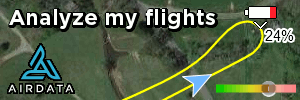BossBob
Well-Known Member
Imagine, an AI trained on YouTube videos or TicToc’s. It doesn’t bear thinking about.
In the lab’, we always used silica gel. 100g of silica gel can absorb 30g of water vapour.
Without the data, there’s no proof that the drone sensors got confused. No one ever supplies the data. The drone ‘jolted’ tells us nothing about what caused the ‘jolt’ but the data would show if it was a systems error.
In the lab’, we always used silica gel. 100g of silica gel can absorb 30g of water vapour.
Without the data, there’s no proof that the drone sensors got confused. No one ever supplies the data. The drone ‘jolted’ tells us nothing about what caused the ‘jolt’ but the data would show if it was a systems error.











